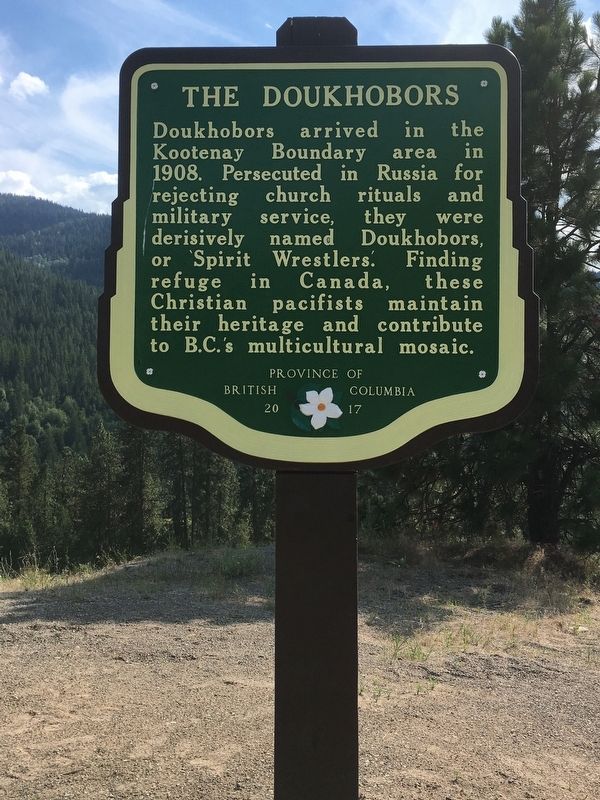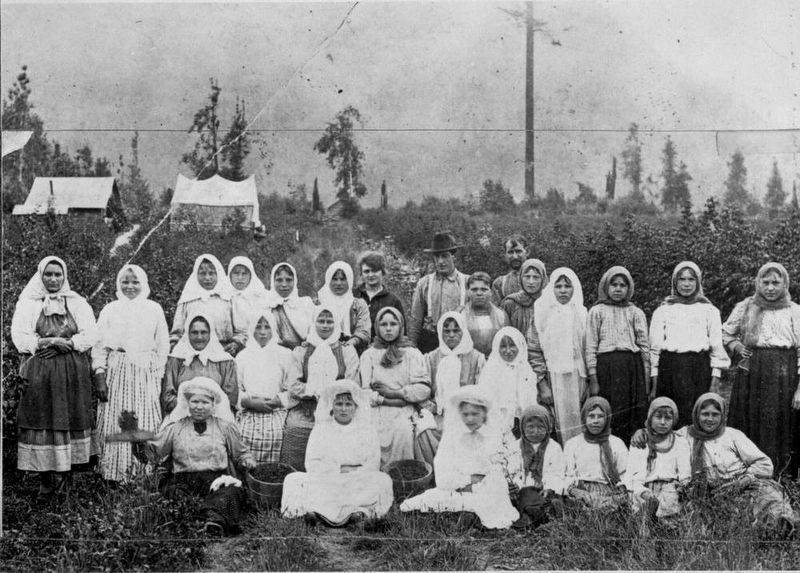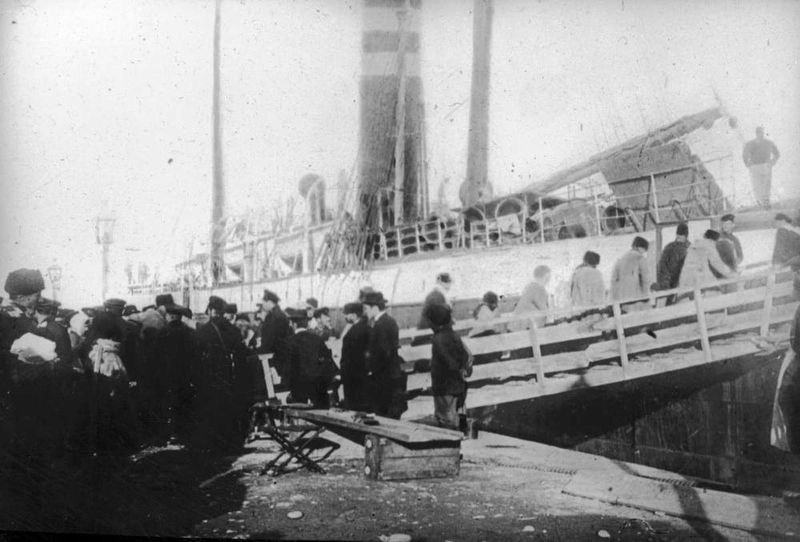Near Grand Forks in Kootenay Boundary, British Columbia — Canada’s West Coast (North America)
The Doukhobors

B.C. Ministry of Transportation and Infrastructure via Flickr (CC BY-NC-ND 2.0), July 17, 2018
1. The Doukhobors Marker
Erected 2017 by Province of British Columbia.
Topics. This historical marker is listed in this topic list: Churches & Religion. A significant historical year for this entry is 1908.
Location. 49° 0.417′ N, 118° 16.251′ W. Marker is near Grand Forks, British Columbia, in Kootenay Boundary. Marker is on Crowsnest Highway (Provincial Highway 3) 3.4 kilometers west of Stewart Creek Road, on the left when traveling west. Marker is in pullout on eastbound side between Grand Forks and Christina Lake. Touch for map. Marker is in this post office area: Grand Forks BC V0H 1H1, Canada. Touch for directions.
Other nearby markers. At least 1 other marker is within 5 kilometers of this marker, measured as the crow flies. Cascade (approx. 4.2 kilometers away).
Also see . . .
1. Doukhobors. Persecuted in their native Russia for their beliefs, they emigrated to Canada — which enticed them with free land to settle on — with the help of Leo Tolstoy and Canadian Quakers. They were first welcomed, but Canada later seized and sold much of their land after they refused to swear allegiance to the English king. (Julie Rak and George Woodcock, The Canadian Encyclopedia, posted Aug. 22, 2013) (Submitted on December 12, 2021, by Duane and Tracy Marsteller of Murfreesboro, Tennessee.)
2. The Doukhobors. Short documentary on the Russian religious refugees and pacifists. (British Columbia Provincial Capital Commission, uploaded by BC History) (Submitted on December 12, 2021, by Duane and Tracy Marsteller of Murfreesboro, Tennessee.)
Credits. This page was last revised on February 11, 2022. It was originally submitted on December 10, 2021, by Duane and Tracy Marsteller of Murfreesboro, Tennessee. This page has been viewed 131 times since then and 12 times this year. Photos: 1. submitted on December 10, 2021, by Duane and Tracy Marsteller of Murfreesboro, Tennessee. 2, 3. submitted on December 12, 2021, by Duane and Tracy Marsteller of Murfreesboro, Tennessee.
Editor’s want-list for this marker. Wide shot of marker and surrounding area in context. • Can you help?

